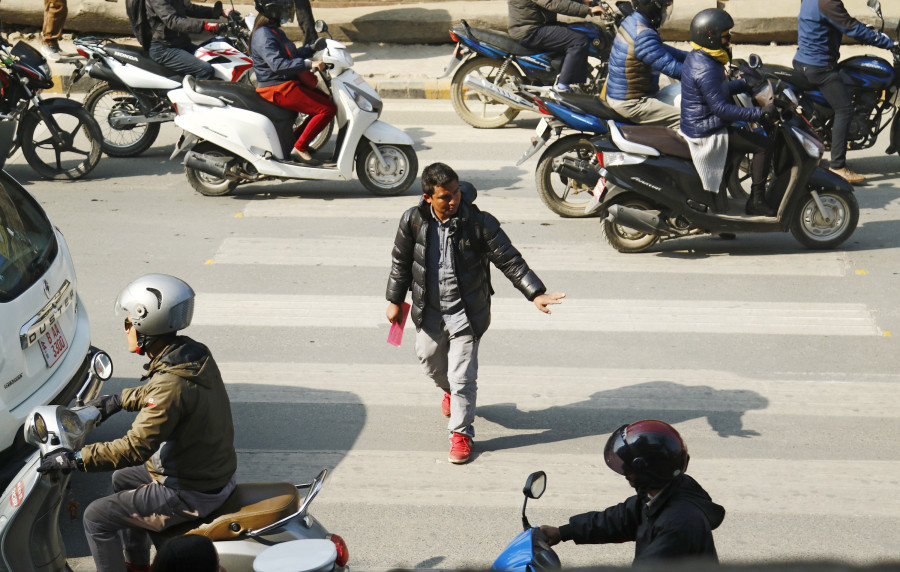Columns
Making roads safer
In the South-East Asia Region, road traffic injuries are responsible for over 316,000 deaths annually.
Poonam Khetrapal Singh
As we mark the 7th UN Global Road Safety Week from 15-21 May 2023, I want to draw your attention to Prakash Karki, a 26-year-old resident of Kanchanpur district, Nepal. Prakash’s life was forever changed in 2020, due to a motorcycle crash that could have been prevented if he had been wearing a helmet and had not been riding under the influence of alcohol. The crash left Prakash with a physical disability, and his family had to bear the enormous financial burden of his medical treatment. His story highlights the need for urgent action to improve road safety and prevent such incidents from happening in the first place. The story of Prakash Karki is a heartbreaking reminder of the dangers of road traffic crashes and the heavy toll they take on families, communities, and entire nations.
On this week, the World Health Organization (WHO) is urging countries and partners in the South-East Asia Region [WHO South East Asia Region comprises 11 member states: Bangladesh, Bhutan, DPR Korea, India, Indonesia, Myanmar, Maldives, Nepal, Sri Lanka, Timor Leste, and Thailand] and around the world to rethink and reimagine mobility for sustainable transport. Road traffic crashes are a major public health issue, causing nearly 1.35 million deaths every year and as many as 50 million injuries, globally. For people aged 5-29 years, there is no greater threat to their lives. Shockingly, 1 in every 4 road traffic deaths occurs among pedestrians and cyclists.
The UN General Assembly has endorsed the Global Plan, Decade of Action for Road Safety, 2021-30, with the goal of reducing road deaths and injuries by at least 50 percent by 2030. The Global Action Plan identifies the solid interventions that are effective and doable. In addition, the Global Plan highlights a shift towards people-centred roads and road networks, those that are planned, designed, built, and operated to eliminate risks and save lives. Such roads consider first and foremost those most at risk of injury: Children and adolescents, people with disabilities, pedestrians, cyclists, and users of public transport. We urge all governments, communities and stakeholders to work together, as achieving this target requires a concerted effort by all partners.
In the South-East Asia Region, road traffic injuries are responsible for over 316,000 deaths annually, with two wheelers contributing more than 44 percent of all road traffic deaths. We must prioritise the needs of vulnerable road users, including motorcyclists, bicyclists, and pedestrians, in our road safety programmes. This requires a multi-faceted approach that includes legal reforms, effective enforcement strategies, and investments in safer road infrastructure and design.
With some 70 percent of the global population expected to live in urban settings by 2030, there will be an increased demand for public transport to facilitate the movement of large and growing populations. Livable streets should be at the heart of every community. We must take advantage of this moment in time to rethink and redo mobility, for the well-being of people and the planet, now and for future generations.
This is also time to think and reprioritise key areas of focus. First, governments should enact/update laws that meet best international practice criteria on the behavioural risk factors and adopt effective enforcement strategies. Second, simple behavioural changes such as wearing quality helmets appropriately by both riders and pillion, wearing seat belts and using child restraints, and preventing drink-driving can save thousands of precious lives. The Ministry of Health, traffic police departments, transport authorities and other agencies should all come together to ensure that behavioural risk factors are reduced. Third, governments must invest in safer road infrastructure and design for all road users with special attention to vulnerable users and develop policies that promote shifting to safer modes like walking and cycling as alternatives to car travel and invest in safe and affordable public transport and encourage its use.
We must prioritise safety at the core of our efforts and work towards achieving the global target of a 50 percent reduction in the number of road traffic deaths and serious injuries by 2030.




 15.12°C Kathmandu
15.12°C Kathmandu















